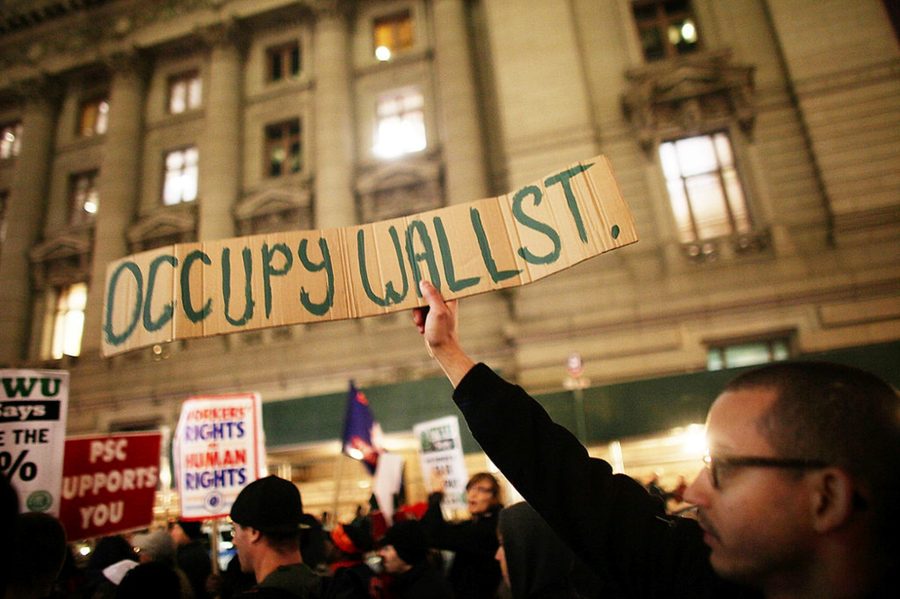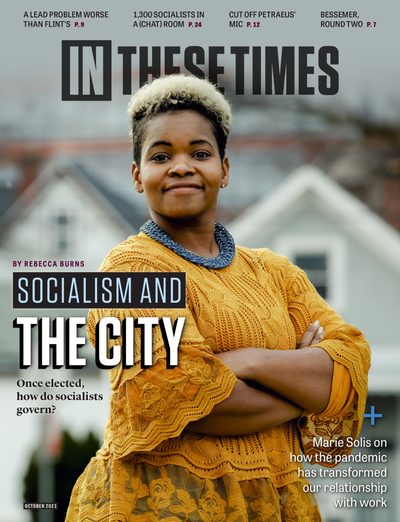Occupy Wall Street, Ten Years After
In 2011, Occupy organizers spoke with In These Times about challenges and opportunities. Ten years later, we look back on the decentralized, grassroots uprising.
In These Times Editors

A decade has passed since activists first camped in New York’s Zuccotti Park as part of Occupy Wall Street, calling attention to our wildly inequitable — and undemocratic — financial and political systems. The protests soon spread across the United States. But despite the punditry and analysis Occupy provoked, its legacy remains murky. While many cite the movement’s lack of clear demands as a failure, others laud its legacy of radical politics and coalition building, even if it didn’t yield immediate returns.
“The thing about democracy,” activist Jesse Myerson told In These Times, is that “it takes forever and it requires a lot of diligence.”
In 2011, Jeremy Gantz wrote:
How do you respond to someone who says Occupy protesters don’t represent the 99%, that they’re marginal and more radical than most people?
Caitlin Manning, Occupy Oakland: I have problems with the 99% rhetoric. Cops are part of the 99%. [Cops] are not our friends [or] part of our movement. The Tea Party is part of the 99%, but they’re not part of the movement.
Jesse Myerson, Occupy Wall Street: I take the opposite view. Austerity budgets, demanded by the Wall Street fat cats … threaten the jobs and pensions of cops. [Tea Party folks are] losing their jobs as well. There is a moral beauty and a quiet nobility in standing with people who don’t stand with you.
How crucial is a stable protest site for building community and the movement more broadly?
Sam Jewler, Occupy D.C.: These places are not just “places”; these are our communities that we’ve built.
Natalie Wahlberg, Occupy Chicago: That’s what [we hope] to achieve by establishing a permanent encampment and community — a parallel society that reflects the values of our movement, of our hope for our future.
What is the downside of the highly egalitarian General Assemblies?
Myerson: The downside is that it becomes inefficient. Which is fine. Our country’s democracy is a facade, behind which there’s this ugly plutocracy where the wealthy control the government. Setting up this alternative, radical democracy draws a stark contrast to the type of democracy offered by the 1%.
Wahlberg: Even though our democracy is painful and slow, people want to be involved. I think that just speaks to the empowerment they feel of being part of a movement that actually listens to them.
Should this movement try to shift the Democratic Party left?
Wahlberg: The Democratic Party has shown itself to be broken and that’s one of the reasons the Occupy movement started. We have no voice; we have no representation.
Myerson: We can’t be held hostage by this lesser-of-two-evils way of thinking about elections, because then our votes can be taken for granted.
Manning: This is about creating a new society from the ground up.
Is there any legislation you would like to see passed?
Myerson: I would be incredibly surprised if any legislative endorsement came out of Occupy Wall Street. Tons of people are working on legislative initiatives and none of them are going to be successful until we can extricate our democratic politics from the control of wealth.
Jewler: More important than anything legislative is consciousness. Politics can only change after consciousness changes.








